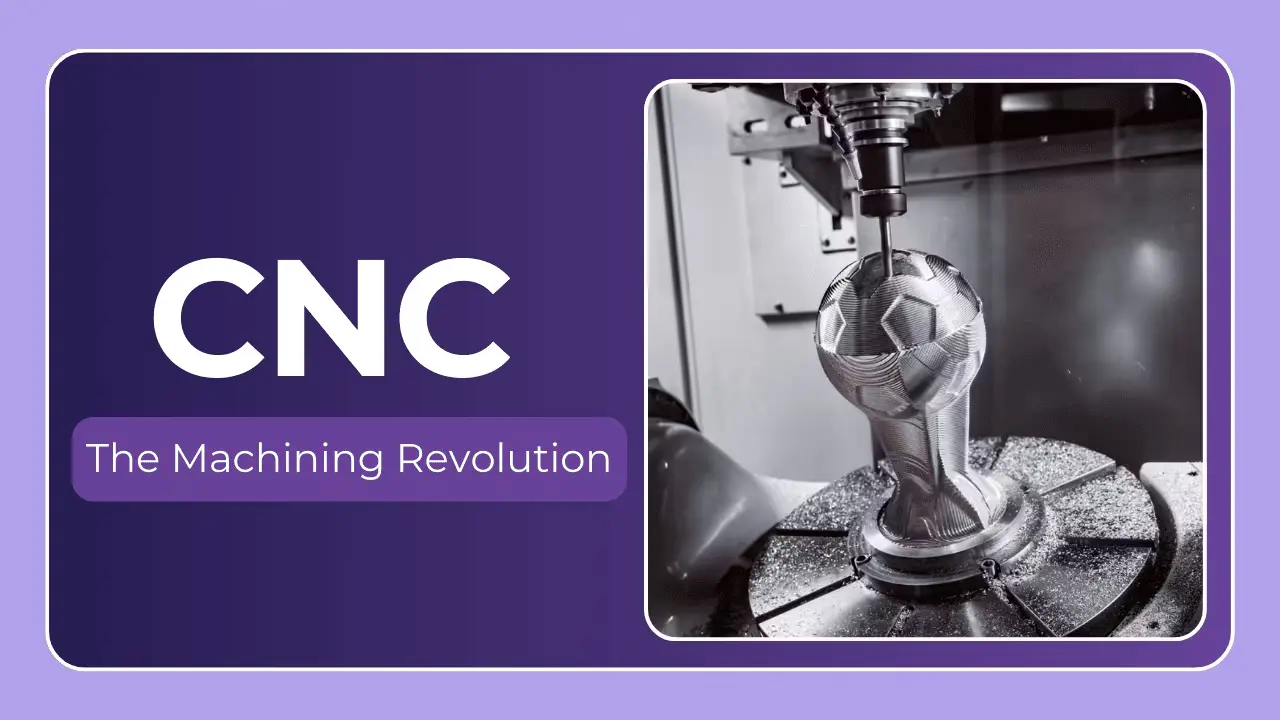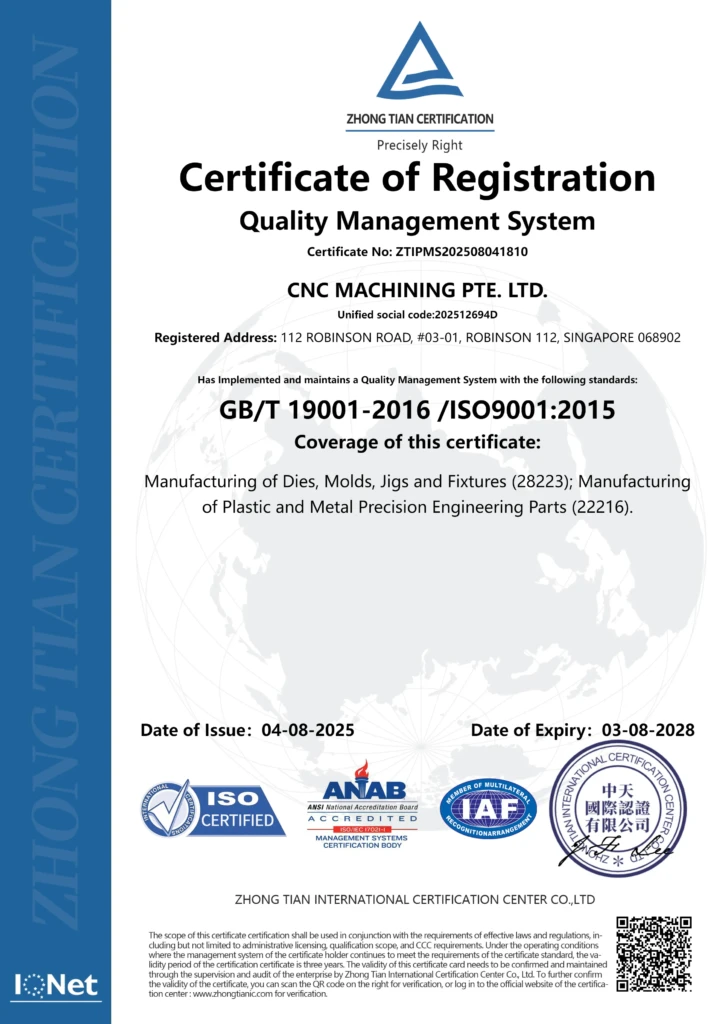Production CNC Machining: Scale to 10k+ Units Efficiently with Automation
Scaling production CNC machining to handle 10,000+ units demands precision, speed, and cost efficiency. For engineers optimizing designs, purchasers managing budgets, startup owners scaling operations, and multinational leaders driving global supply chains, an automated production cell is the key to unlocking high-volume success. At CNC MACHINING PTE. LTD, a premier 5-axis CNC machining factory, we leverage cutting-edge automation to deliver high-quality metal parts with unmatched efficiency. This blog post explores the components of an automated production cell—robotic part loading, pallet changers, in-process gauging, tool wear monitoring, and adaptive machining—while highlighting Overall Equipment Effectiveness (OEE) metrics and labor cost reduction data to guide your high-volume strategy.
Why Automation is Critical for High-Volume CNC Machining
High-volume production CNC machining requires a delicate balance of throughput, quality, and cost. Manual processes, while suitable for low volumes, struggle to keep up with the demands of 10,000+ unit runs. Automation transforms this landscape by:
- Boosting Throughput: Minimize downtime and maximize machine uptime.
- Ensuring Consistency: Deliver uniform parts across large batches.
- Reducing Costs: Slash labor expenses while maintaining precision.
At CNC MACHINING PTE. LTD, our automated production cells, powered by 5-axis CNC machining, enable us to process a wide range of metals—aluminum, stainless steel, titanium, and more—with one-stop post-processing and finishing services. Let’s dive into the five core components of our automated system and how they drive efficiency.
The Automated Production Cell: 5 Key Components
Our automated production cell is a synchronized ecosystem designed to streamline high-volume manufacturing. Each component plays a critical role in achieving scalability and cost efficiency.
Robotic Part Loading—Seamless Material Handling
Robotic arms automate the loading and unloading of raw materials and finished parts, reducing manual intervention.
How It Works
- Precision Placement: Robots position workpieces with micron-level accuracy.
- Continuous Operation: 24/7 loading capability eliminates downtime.
- Flexibility: Handles various part sizes and shapes with programmable grippers.
Impact
A robotic loading system can reduce setup time by 40%, enabling faster cycle times for production CNC machining.
Insight: Search “robotic part loading for CNC machining” to explore its role in high-volume production.
Pallet Changers—Maximize Machine Uptime
Pallet changers allow multiple workpieces to be pre-loaded on pallets, swapped seamlessly during machining.
How It Works
- Dual-Pallet System: One pallet is machined while another is prepped.
- Quick Swaps: Pallet changes take under 30 seconds, minimizing idle time.
- Scalability: Supports large batches with minimal operator involvement.
Impact
Pallet changers boost machine uptime by 25%, critical for producing 10,000+ units efficiently.
Tip: Look up “pallet changers in CNC production” for insights on throughput gains.
In-Process Gauging—Real-Time Quality Control
In-process gauging uses integrated probes to measure parts during machining, ensuring dimensional accuracy without stopping the process.
How It Works
- Real-Time Measurement: Probes check tolerances as small as ±0.005 mm.
- Immediate Feedback: Detects deviations instantly, reducing scrap rates.
- Data Logging: Generates reports for quality assurance and traceability.
Impact
In-process gauging can cut inspection time by 50% and reduce defects by 30%, enhancing OEE in high-volume runs.
Insight: Explore “in-process gauging for CNC machining” to see its quality benefits.
Tool Wear Monitoring—Extend Tool Life
Tool wear monitoring systems track the condition of cutting tools, predicting and preventing failures.
How It Works
- Sensors: Monitor vibration, temperature, and cutting forces.
- Predictive Maintenance: Alerts operators to replace tools before they fail.
- Optimization: Adjusts cutting parameters to extend tool life.
Impact
Tool wear monitoring can reduce tooling costs by 20% and prevent unplanned downtime, a key driver of cost efficiency.
Tip: Search “tool wear monitoring in CNC production” for cost-saving strategies.
Adaptive Machining—Smart Adjustments on the Fly
Adaptive machining uses real-time data to adjust machining parameters, compensating for variables like material inconsistencies or thermal expansion.
How It Works
- Dynamic Control: Modifies feed rates and spindle speeds during operation.
- Error Correction: Adjusts for tool deflection or workpiece movement.
- Consistency: Ensures uniform quality across thousands of parts.
Impact
Adaptive machining improves part consistency by 15% and reduces rework by 25%, vital for large-scale production CNC machining.
Insight: Look up “adaptive machining for high-volume CNC” to understand its precision benefits.
OEE Metrics: Measuring Efficiency
Overall Equipment Effectiveness (OEE) is a gold-standard metric for evaluating production efficiency, combining availability, performance, and quality. Our automated production cell achieves:
- Availability: 90%+ (vs. 70% for manual setups), thanks to robotic loading and pallet changers.
- Performance: 85%+ (vs. 60% for manual), driven by optimized toolpaths and adaptive machining.
- Quality: 95%+ (vs. 80% for manual), ensured by in-process gauging and tool wear monitoring.
OEE Score: 65-75% for automated cells vs. 33-50% for manual setups—a 30-50% improvement. This translates to higher throughput and lower per-unit costs for runs of 10,000+ parts.
Labor Cost Reduction Data
Automation significantly reduces labor costs, a critical factor in high-volume production CNC machining. Here’s the breakdown:
- Manual Setup: Requires 2-3 operators per machine, costing $25-$40/hour each. For a 10,000-unit run over 4 weeks, labor costs can reach $20,000-$30,000.
- Automated Cell: Requires 1 operator for oversight, reducing labor to $5,000-$8,000 for the same run—a 70-75% savings.
Additional savings come from reduced scrap (5% vs. 15% in manual setups) and lower tooling costs (20% less due to monitoring). For a multinational producing 10,000 aerospace components, our automated cell saved $25,000 in labor and $10,000 in materials.
Why Choose CNC MACHINING PTE. LTD?
At CNC MACHINING PTE. LTD, we’re not just a machining shop—we’re your partner in scaling production. Our 5-axis CNC machining capabilities and automated production cells set us apart:
- Advanced Automation: Robotic loading, pallet changers, and adaptive machining for maximum efficiency.
- Material Versatility: Process aluminum, stainless steel, titanium, and more with precision.
- One-Stop Solution: From machining to finishing (anodizing, polishing), we handle it all.
- Online Customization: Instant quotes and real-time tracking via our platform.
Whether you’re a startup scaling a new product or a multinational optimizing global supply chains, our production CNC machining services deliver results.
Real-World Success Stories
- Startup Breakthrough: A robotics startup scaled from 100 to 10,000 units in 6 weeks using our automated cell, cutting costs by 30% and meeting investor deadlines.
- Multinational Efficiency: An automotive giant achieved a 92% OEE score for a 15,000-unit run, saving $50,000 in labor and materials.
These outcomes showcase the power of automation in high-volume production.
Conclusion: Scale Smarter with CNC MACHINING PTE. LTD
Scaling to 10,000+ units doesn’t have to be daunting. With production CNC machining powered by an automated production cell, you can achieve precision, speed, and cost efficiency at every step. At CNC MACHINING PTE. LTD, our 5-axis CNC machining expertise and cutting-edge automation make us the ideal partner for your high-volume needs. Ready to take your production to the next level? Contact us for a free consultation or visit our online platform to customize your project today.





